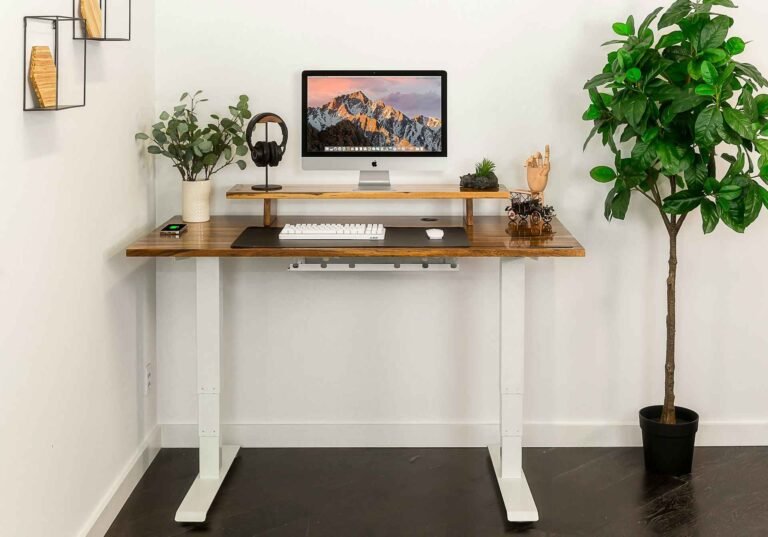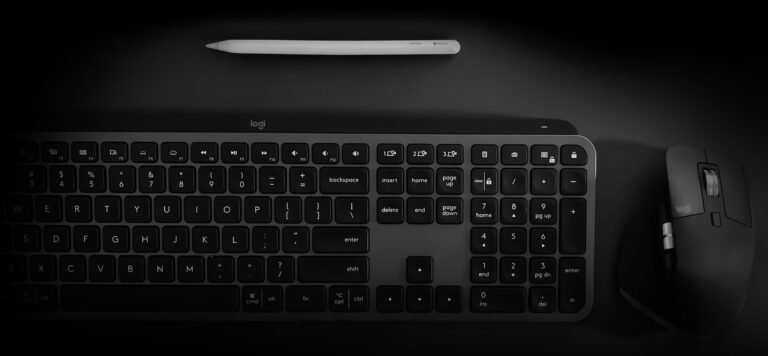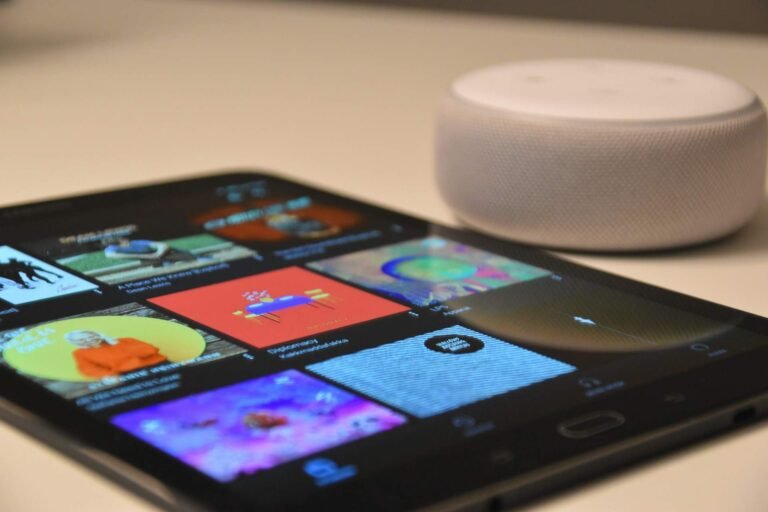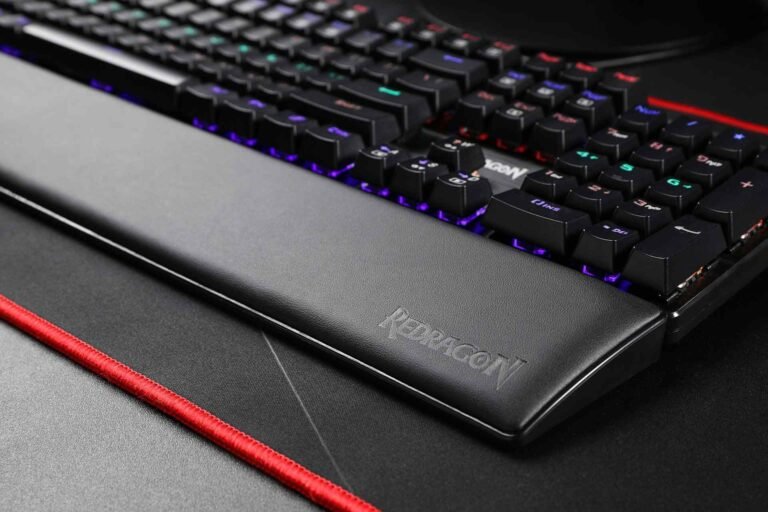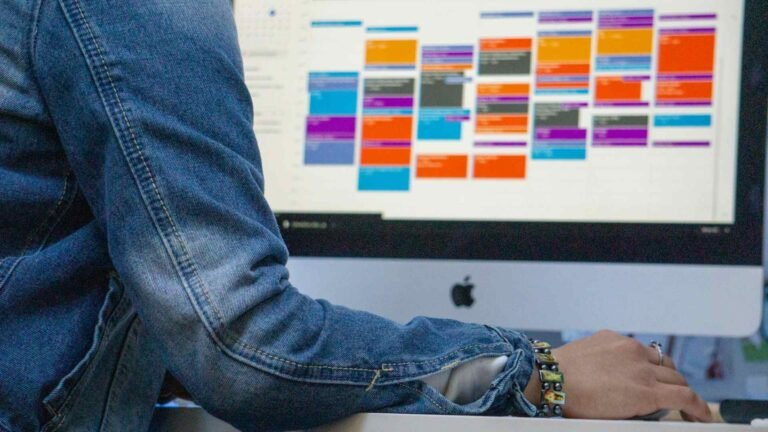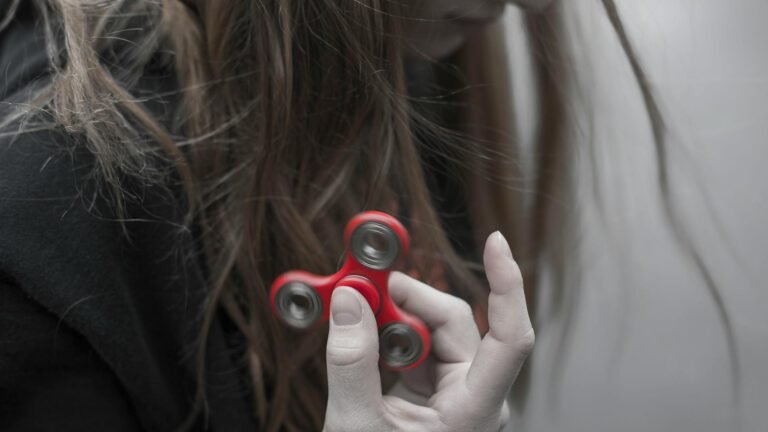Best Mini Projectors for Presentations 2025: 3 Portable Powerhouses Reviewed
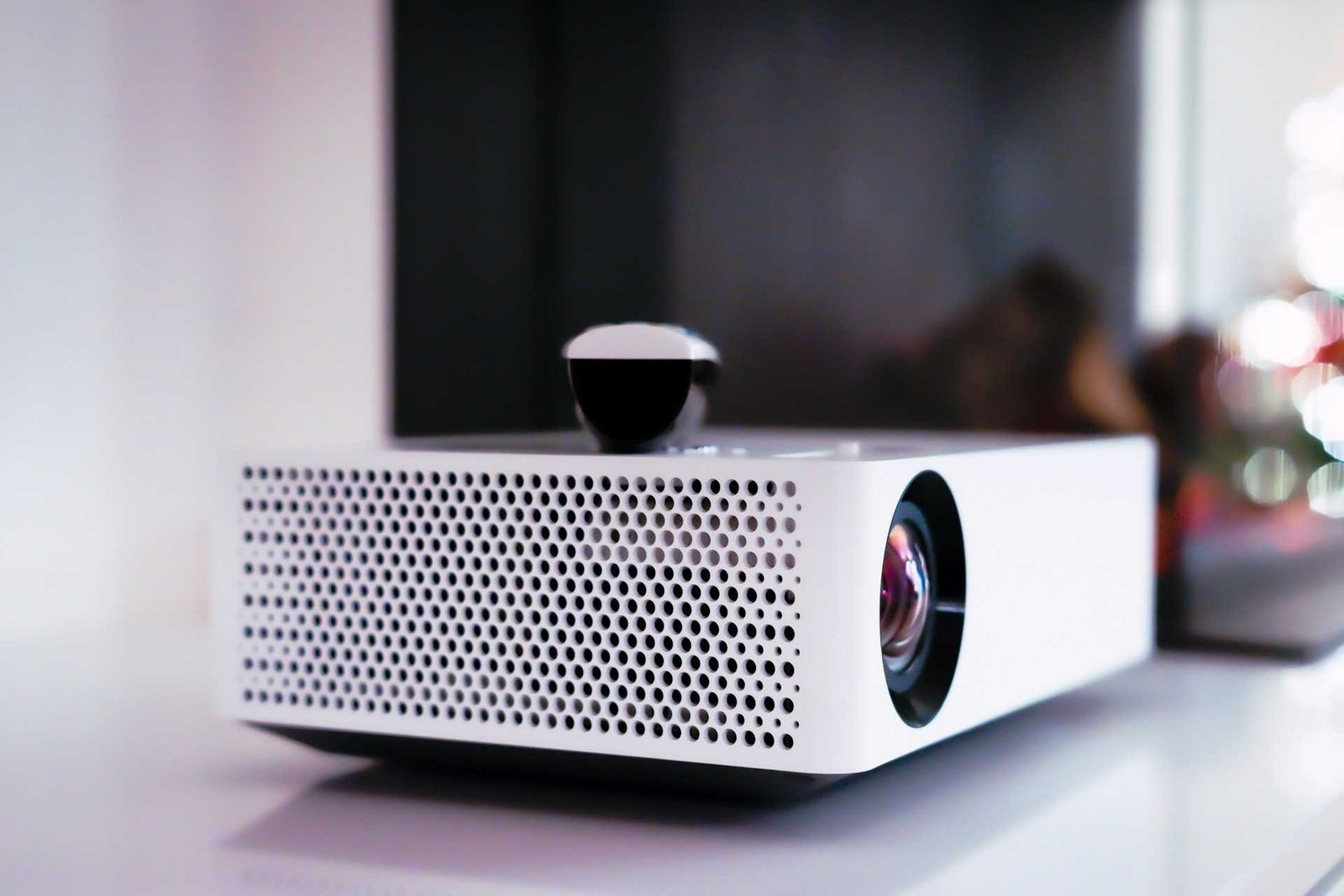
Remember when giving a presentation meant lugging around a briefcase-sized projector that weighed as much as a small child? Those days are officially over. Today’s portable projectors for presentations slip into your bag (or sometimes even your pocket) and deliver image quality that would have seemed like science fiction just a few years ago.
Whether you’re pitching to clients, teaching a class, or setting up an impromptu movie night after the quarterly meeting wraps up, having the right mini projector can transform any space into your personal presentation stage. We’ve compared three standout options that cover different needs and budgets, from premium smart projectors to ultra-compact designs that literally fold up like origami.
Why a Mini Projector Changes Everything for Presentations
Traditional presentation setups are a pain. Conference room projectors mysteriously stop working five minutes before your pitch. Hotel meeting rooms charge you an arm and a leg for AV equipment. Your laptop screen just doesn’t cut it when you’re trying to impress a room full of decision-makers.
That’s where portable projectors for business presentations swoop in to save the day. These compact devices pack serious technology into surprisingly small packages. Modern mini projectors deliver brightness levels that actually work in lit rooms (not just pitch-black caves), automatic focus that saves you from that awkward “is this clear enough?” moment, and wireless connectivity that eliminates the cable chaos.
The market has evolved dramatically too. Early pocket projectors were more novelty than necessity, offering dim images that required complete darkness and constant manual adjustments. Today’s best portable mini projectors for business presentations feature genuine HD resolution, smart operating systems, and batteries that can get you through most meetings without hunting for an outlet.
What makes these devices particularly valuable is their versatility. Sure, they’re fantastic for work presentations, but that same portable projector for laptop presentations becomes your entertainment system for the hotel room, a teaching tool for training sessions, or even a makeshift home theater when you’re tired of squinting at screens. Some professionals keep one permanently in their work bag, treating it like an essential tool alongside their laptop and notebook.
WiMiUS P62 Pro: The Premium Powerhouse
When you need a portable projector for PowerPoint presentations that can handle anything from boardroom pitches to evening entertainment, the WiMiUS P62 Pro positions itself as the do-it-all solution. This isn’t exactly a “pocket” projector at just over a kilogram, but what it sacrifices in ultra-portability, it makes up for with features that would make some home theater projectors jealous.
Key Features
The P62 Pro comes loaded with officially licensed streaming apps including Netflix, Prime Video, and YouTube built directly into its smart operating system. That means you can stream content without connecting any external device, which is genuinely convenient when you want to show video content during presentations or unwind after a long day of meetings.
At 800 ANSI lumens, this projector brings serious brightness to the table. It offers native 1080P resolution with 4K support, meaning it can accept and downscale 4K content for crisp visuals. The dual 10W Hi-Fi speakers with Dolby audio actually deliver respectable sound without needing external speakers, though you can connect them via Bluetooth 5.2 or HDMI ARC if you prefer.
Connectivity is where the P62 Pro really shines for business use. You get two HDMI ports (one with CEC, one with ARC and CEC), two USB ports, WiFi 6, Bluetooth, and a 3.5mm audio output. This generous selection means you can connect multiple devices simultaneously, whether that’s a laptop, gaming console, USB drive, or streaming stick.
The AI-powered automatic focus and keystone correction work impressively well. Point the projector at your surface, and it analyzes the scene, adjusts focus, corrects for angle distortion, and even detects obstacles to optimize the image placement. There’s also a 50-100% zoom function, giving you flexibility in positioning without physically moving the unit.
- Extremely bright at 800 ANSI lumens, works well in moderately lit rooms
- Comprehensive connectivity options with dual HDMI and USB ports
- Built-in smart apps eliminate need for streaming devices
- Powerful speakers with Dolby audio
- Advanced automatic setup features save time
- HDR10 support enhances color and contrast
- Heavier than true pocket projectors at 1.2kg
- No carrying case included despite premium positioning
- Size makes it less convenient for frequent travel
- The cooling fan produces some noise, though rated below 30dB
User Feedback
See customer reviews on Amazon
The P62 Pro receives positive attention from reviewers who appreciate its bright, clear image quality and broad feature set. Many highlight the convenience of built-in streaming apps and the reliability of automatic focus and keystone correction. Sound quality from the integrated speakers is frequently described as sufficient for everyday use without requiring external audio equipment.
Some reviewers mention the projector’s size as both an advantage and a drawback, valued for its sturdy construction yet less portable than smaller models. Brightness performance earns consistent praise, with reports of successful daytime viewing when curtains are drawn. A few users note that while the cooling fan is relatively quiet, it remains audible in silent environments.
Our Verdict: ⭐⭐⭐⭐☆ (4.5/5)
The WiMiUS P62 Pro targets users who prioritize image quality and features over maximum portability. If you’re setting up semi-permanent installations (think office presentation rooms or home theaters) but want the flexibility to occasionally move the projector between locations, this option makes sense. The smart features and brightness justify the premium pricing for professionals who present frequently and want reliable performance.
For someone who travels weekly for presentations, the weight and size might feel cumbersome. But for consultants who drive to client sites, educators moving between classrooms, or anyone who values plug-and-play convenience with excellent image quality, the P62 Pro delivers.
Aurzen ZIP: The Ultra-Portable Innovation
Here’s where things get interesting. The Aurzen ZIP represents a completely different approach to portable projection: make it so small and light that you’ll actually carry it everywhere. This truly pocket-sized projector folds into a tri-fold Z-shape design that’s roughly the size of a thick wallet. At 530 grams, it’s lighter than many tablets.
Key Features
The ZIP’s party trick is its innovative tri-fold design with a built-in stand. Unfold it, and the projector automatically positions itself at the right angle without needing a separate mount or tripod. This Z-shaped configuration serves as both protection during transport and a functional stand during use.
For presentations, the ZIP offers native 720P resolution with support for 1080P and 4K content. Its 100 ANSI lumens won’t compete with the WiMiUS in brightness, but for a battery-powered projector this size, it’s respectable. The DLP projection technology delivers decent color accuracy and contrast within its capabilities.
The standout feature for business users is the one-click screen mirroring that works without requiring a WiFi network connection. You enable WiFi on your device, tap mirror, and you’re projecting. This eliminates the frustrating “connect to network” dance that can eat into precious presentation time. It works with iOS, macOS, Android, and Windows devices, though notably not with Google Pixel phones or Chromebooks.
The ToF (Time of Flight) auto-focus technology measures distance 30 times per second, instantly adjusting focus and vertical keystone correction. In practice, this means you can set down the projector, and it’s ready to go in seconds.
Power comes from a built-in 5,000mAh battery that provides roughly 90 minutes of projection time. Type-C fast charging means you can top up the battery relatively quickly between meetings.
- Genuinely pocket-portable at 530g with innovative folding design
- Built-in stand eliminates need for accessories
- Fast, WiFi-free screen mirroring saves setup time
- Instant auto-focus and keystone correction
- Vertical projection mode great for social media content
- Stylish design makes a memorable impression
- 100 ANSI lumens requires darker environments
- Battery life limited to approximately 90 minutes
- 720P native resolution lower than alternatives
- Not compatible with Pixel phones or Chromebooks
- Smaller speaker produces less volume
User Feedback
See customer reviews on Amazon
Reviewers frequently highlight the ZIP projector’s portability and build quality, often noting that performance exceeds expectations for its compact size. The straightforward setup process and screen-mirroring functionality receive regular praise, especially for avoiding Wi-Fi connectivity issues.
Feedback on image quality varies according to expectations. Those aware of the limitations of a pocket-sized projector find the visuals satisfactory, particularly in darker rooms, while others seeking high brightness in well-lit environments report mixed results.
Reported battery life typically aligns with manufacturer claims (around 60–90 minutes depending on brightness settings). Many reviewers mention using the device while plugged in for longer sessions. The auto-focus feature is widely appreciated for its quick and reliable operation.
Our Verdict: ⭐⭐⭐⭐☆ (4.1/5)
The Aurzen ZIP succeeds brilliantly at its primary goal: being so portable that you’ll actually bring it along. This is the best small projector for presentations when you need maximum mobility, whether that’s traveling salespeople, consultants visiting multiple sites daily, or anyone who values having presentation capability always within reach.
The brightness and battery limitations mean it’s not ideal as your only projector if you frequently present in large, bright conference rooms. But as a travel companion or supplementary device, it’s exceptional. The instant setup and mirror-free screen sharing also make it valuable for spontaneous presentations or quick product demonstrations where fumbling with cables would kill your momentum.
We genuinely appreciate how the ZIP doesn’t try to be everything to everyone. It knows exactly what it is (ultra-portable) and executes that vision without unnecessary compromises in other areas.
Gaimoo GM200: The Budget-Friendly Option
Not everyone needs (or wants to pay for) premium features, and that’s where the Gaimoo GM200 enters the conversation. This affordable option delivers surprising functionality for its price point, making it accessible to small business owners, teachers, or anyone dipping their toes into portable projection without a major financial commitment.
Key Features
The GM200 might be the most affordable option here, but it doesn’t skimp on modern conveniences. It includes built-in Android TV OS with access to streaming apps, WiFi 6 connectivity, and Bluetooth 5.2. Native 720P resolution with 4K and 1080P support handles most presentation content adequately.
One clever design choice is the 180-degree rotatable base. Point it at the wall, ceiling, or any angle in between without repositioning the entire unit. Combined with automatic keystone correction and digital zoom (35-100%), you get considerable flexibility in setup options.
The GM200 includes both a remote control and a wireless mouse in the package. That mouse connectivity proves surprisingly useful for presentations, letting you control slides directly through the projector without standing next to your laptop. It’s the kind of practical touch that shows someone actually thought about real-world use cases.
Connectivity includes one HDMI port, one USB port, and a 3.5mm headphone jack. Less generous than the WiMiUS, but sufficient for most presentation scenarios where you’re connecting a single laptop or streaming device. The built-in HiFi speaker provides basic audio, and Bluetooth lets you connect external speakers or headphones for improved sound when needed.
The GM200 sits between the chunky WiMiUS and ultra-light Aurzen in terms of portability. It’s light enough to toss in a bag without thinking twice but substantial enough to feel durable.
- Affordable entry point for portable projection
- Included wireless mouse adds presentation convenience
- 180-degree rotation provides setup flexibility
- Built-in smart TV system and apps
- WiFi 6 and Bluetooth 5.2 connectivity
- Lightweight and compact design
- Brightness lower than premium options
- Single HDMI and USB port limits simultaneous connections
- Build quality feels less premium than alternatives
- Automatic features less sophisticated than higher-end models
- Fan noise noticeable in quiet rooms
User Feedback
See customer reviews on Amazon
Reviewers generally express satisfaction with the value offered, frequently commenting that performance exceeds expectations for the price. Picture quality in darker environments is often viewed positively, though several note the need to reduce ambient light compared to higher-brightness models.
Setup is described as simple, with many appreciating the included mouse and straightforward Wi-Fi and Bluetooth pairing. The 180-degree rotation feature is well-liked for ceiling projection and flexible positioning. Several reviewers report successful use for both casual home viewing and presentations.
Some mention brightness limitations in well-lit rooms, but most consider this reasonable given the cost. Opinions on the built-in speaker are divided, some find it adequate for small rooms, while others prefer connecting external audio. Overall, the consensus among reviewers is that this projector delivers strong value for its category.
Our Verdict: ⭐⭐⭐⭐☆ (3.8/5)
The Gaimoo GM200 earns its place as the budget-friendly champion by delivering essential features without pretending to compete with premium options. This is the ideal mini projector for presentations when you need basic functionality without stretching the budget, perfect for occasional presenters, educators with limited funding, or anyone wanting a backup projector.
The included mouse and rotatable design show thoughtful attention to practical presentation needs. While brightness and build quality don’t match pricier alternatives, they’re entirely adequate for darkened rooms and typical use cases. If you present in controlled lighting environments and don’t need cinema-level brightness, the GM200 represents excellent value.
Consider this option if you’re starting out with portable projection, need a second projector for less critical situations, or simply prefer spending less while accepting reasonable compromises.
Comparison Table
| Feature | WiMiUS P62 Pro | Aurzen ZIP | Gaimoo GM200 |
|---|---|---|---|
| Weight | 1200g | 530g | 400g |
| Native Resolution | 1080P | 720P | 720P |
| Brightness | 800 ANSI lumens | 100 ANSI lumens | 200 ANSI lumens |
| Display Technology | LCD | DLP | LCD |
| Battery | No battery | 5,000mAh (90 min) | No battery |
| Auto Focus | AI-powered ToF | ToF Zero-Lag | Standard |
| Keystone Correction | Auto | Auto | Auto |
| HDMI Ports | 2 (ARC/CEC) | 0 | 1 |
| USB Ports | 2 | 1 (Type-C) | 1 |
| WiFi | WiFi 6 | WiFi (mirror only) | WiFi 6 |
| Bluetooth | 5.2 (two-way) | 5.4 | 5.2 (two-way) |
| Built-in Apps | Yes (Netflix, etc.) | No | Yes (Android TV) |
| Speakers | Dual 10W Dolby | Single speaker | HiFi speaker |
| Max Screen Size | 300 inches | 125 inches | 120 inches |
| Best For | Premium features & brightness | Ultra-portability | Budget-conscious buyers |
Brightness: The Make-or-Break Factor
Let’s talk about lumens, because this specification matters more than almost anything else when choosing a portable projector for PowerPoint presentations. You’ve probably sat through presentations where the projected image looked washed out and barely visible, forcing everyone to squint while the presenter apologizes. That’s a brightness problem.

ANSI lumens measure actual light output in standardized conditions. The WiMiUS P62 Pro’s 800 ANSI lumens represents genuine brightness suitable for rooms with ambient light. You can present with window shades drawn and overhead lights dimmed without the image disappearing. For typical conference rooms and classrooms, this brightness level works reliably.
The Aurzen ZIP’s 100 ANSI lumens tells a different story. This brightness works fine in darker environments but struggles against ambient light. Think hotel rooms at night, small meeting spaces with lights off, or evening presentations. It’s the tradeoff for battery power and pocket-sized portability. You’re not plugging this into wall power for maximum brightness, you’re running on battery for convenience.
The Gaimoo GM200 falls somewhere in between. It handles typical small conference rooms with lights partially dimmed but won’t overpower afternoon sunlight streaming through windows.
Related read: Cool Light vs Warm Light: Choosing the Right Lighting for Your Space
Here’s the practical advice: if you present in varying environments without control over lighting, prioritize brightness. If you can control the room (turn off lights, close blinds), moderate brightness suffices. The frustration of a barely visible presentation outweighs almost any other feature, so be honest about your typical presentation conditions before compromising on lumens for portability or price.
Connectivity: Beyond Just HDMI
Modern portable projectors for laptop presentations need to connect to more than just your computer. The reality of professional presentations involves connecting to various devices, sometimes simultaneously, while also considering audio output options.
The WiMiUS P62 Pro’s dual HDMI setup provides genuine flexibility. Connect your laptop to one port and keep a streaming stick in the other. The USB ports accommodate flash drives with presentation files, wired keyboards, or other peripherals. WiFi 6 ensures fast wireless connectivity for screen mirroring or streaming, while Bluetooth handles audio output to wireless speakers or headphones.
The Aurzen ZIP takes a radically different approach by minimizing physical ports (just Type-C for charging and data) while perfecting wireless screen mirroring. This works beautifully when it works but creates dependency on the mirroring function. The lack of HDMI means no direct connection to devices without wireless capability. For modern smartphones and laptops, this isn’t usually problematic, but it does limit compatibility with older equipment.
The Gaimoo GM200 provides basic but adequate connectivity with single HDMI and USB ports plus Bluetooth audio. Most presentations require only one wired connection anyway, so unless you need simultaneous device connections, this proves sufficient. The inclusion of a wireless mouse via USB actually adds practical value for presenters who want to control slides from anywhere in the room.
Related read: Trackball Mouse vs Vertical Mouse: Which Ergonomic Solution Wins?
Consider your typical presentation setup. Do you need to connect multiple devices? Do you rely on wired connections for reliability? Would wireless-only connectivity work for your equipment? These questions help identify which connectivity approach suits your needs.
Smart Features: Built-in Apps vs. External Devices
The integration of smart operating systems into portable projectors represents a significant evolution. Traditional projectors required connecting external streaming devices or computers for content. Smart projectors eliminate this step by running apps directly.
The WiMiUS P62 Pro and Gaimoo GM200 both include built-in smart TV operating systems with access to streaming apps. This matters more than you might initially think. Imagine wanting to show a YouTube video during a presentation, a product demo video from your company’s streaming library, or reference material from Netflix. With built-in apps, you access this content directly without connecting your laptop or fumbling with streaming sticks.
For business presentations specifically, this capability means showing video content without worrying about file formats, compatibility, or whether your video files transferred correctly to your laptop. Just log into the relevant streaming service and show the content directly. It also transforms the projector into a entertainment device for hotel rooms or evening relaxation after conferences.
The Aurzen ZIP skips built-in apps entirely, focusing instead on seamless screen mirroring from your devices. This keeps the projector simple and probably contributes to its exceptional portability, but it means you’re always reliant on another device for content.
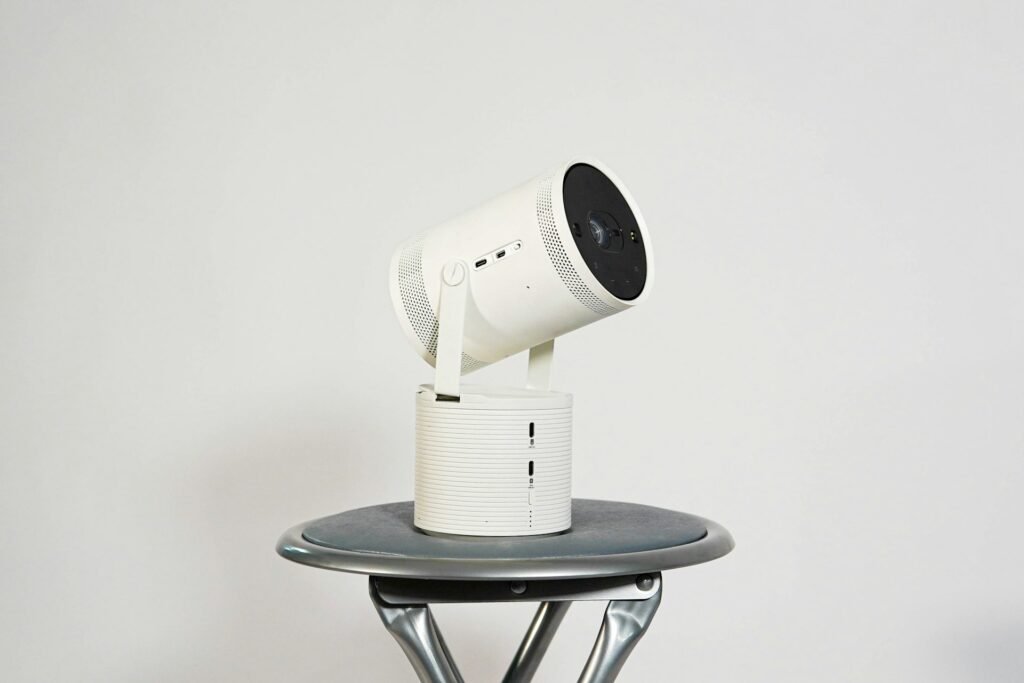
Whether built-in apps matter depends on how you present. If you primarily show PowerPoint slides and occasional videos from your laptop, external apps might be unnecessary complexity. If you frequently reference online content, demonstrate web-based tools, or want entertainment flexibility, integrated apps prove genuinely valuable.
Audio: The Often-Overlooked Component
Here’s something that catches people off-guard: projector speakers matter more than you’d think. Terrible audio ruins presentations almost as effectively as dim images, yet audio quality often gets treated as an afterthought.
The WiMiUS P62 Pro’s dual 10W speakers with Dolby audio actually deliver respectable sound for a projector. They handle presentation audio, video playback, and even casual entertainment without immediately demanding external speakers. The two-way Bluetooth is particularly clever, letting you either send projector audio to external speakers or use the projector itself as a Bluetooth speaker for your phone.
The Aurzen ZIP’s single built-in speaker does the job for basic presentation audio but clearly prioritizes portability over sound quality. For anything beyond announcing “next slide please,” you’ll want to connect Bluetooth speakers. The good news is that it supports this connection, so you’re not stuck with tinny audio if sound matters for your presentation.
The Gaimoo GM200’s HiFi speaker falls in the middle ground, providing adequate audio for most presentations while benefiting from external speaker connections for larger rooms or audio-focused content.
Practical advice: test your projector’s audio before important presentations. Bring a small Bluetooth speaker as backup if audio quality matters for your content. The few extra seconds connecting external audio beats apologizing for barely audible sound throughout your presentation.
When to Choose Which Projector
After comparing specifications, features, and real-world performance, how do you actually decide which portable projector for presentations fits your needs? Here’s our recommendation framework based on different use cases.
- Image quality and brightness are your top priorities
- You present in varying lighting conditions including bright rooms
- Built-in streaming apps and smart features appeal to you
- You need comprehensive connectivity for multiple devices
- Budget accommodates premium pricing
- You transport between locations by car rather than flying weekly
- Maximum portability is essential for your workflow
- You present in multiple locations daily or travel frequently
- Quick setup time directly impacts your professional effectiveness
- Battery operation matters for your presentation environments
- You need vertical projection for social media or specialty content
- Sleek design and conversation-starting aesthetics matter
- Budget constraints are significant
- You present primarily in controlled lighting environments
- Basic functionality meets your needs without premium features
- Weight is a concern but battery power isn’t essential
- You need a backup projector for occasional use
No single best mini projector for presentations exists because different presentations demand different capabilities. The consultant presenting to executives in various corporate offices values different features than the teacher moving between classrooms or the salesperson demoing products at trade shows.
Maintaining Your Portable Projector
Portable projectors represent meaningful investments that deserve proper care. A few simple maintenance practices extend lifespan and maintain performance.
Keep lenses clean using proper microfiber cloths rather than shirts or paper towels that can scratch the lens. Most projectors include lens cleaning kits, use them. A dusty or smudged lens degrades image quality more than any specification limitation.
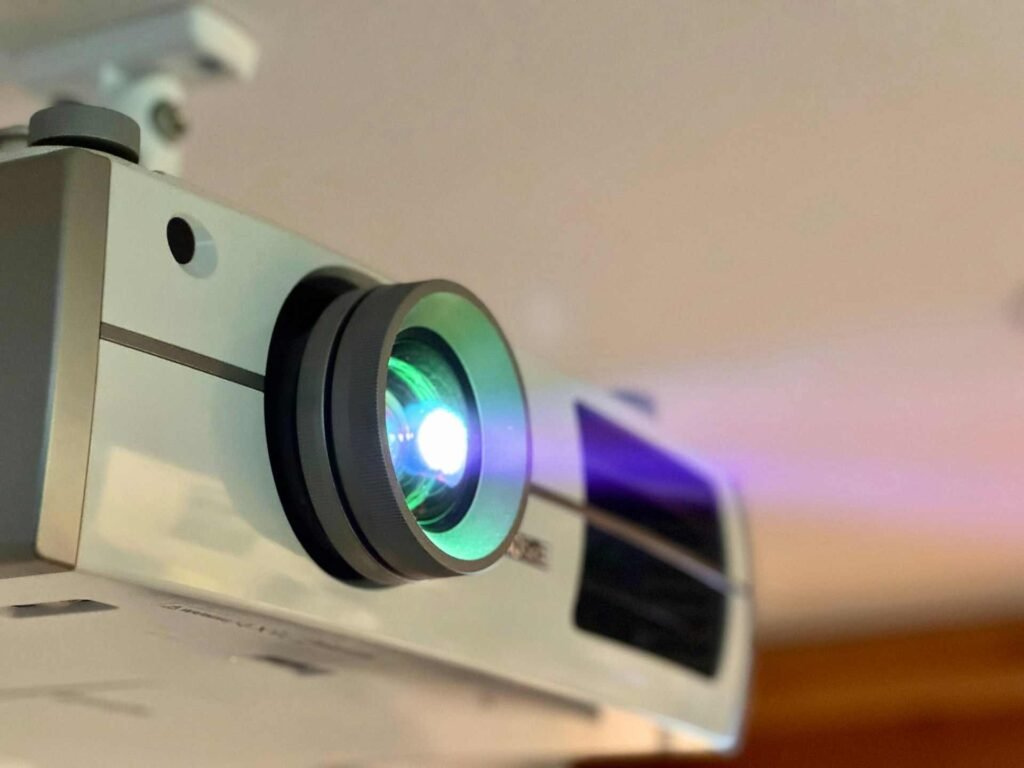
Ventilation matters critically for projector longevity. Never block air vents with bags, papers, or by placing the projector on soft surfaces that obstruct airflow. Overheating shortens lamp life and can cause permanent damage. Give your projector breathing room, literally.
Update firmware regularly if your projector includes smart features. The WiMiUS and Gaimoo models receive over-the-air updates that improve performance, fix bugs, and sometimes add features. Checking for updates monthly keeps your device current.
Transport projectors in padded cases or dedicated compartments in your bag. The Aurzen ZIP’s folding design provides built-in protection, but add a sleeve for extra security. The WiMiUS and Gaimoo benefit from protective cases that prevent impacts from damaging internal components or lenses.
For battery-powered projectors like the ZIP, maintain battery health by avoiding complete discharge when possible and unplugging after reaching full charge. Lithium batteries last longer with partial charge cycles rather than constant full-discharge patterns.
Frequently Asked Questions
How many lumens do I need for daytime presentations?
For presentations in rooms with ambient light or windows, aim for at least 400-800 ANSI lumens. The WiMiUS P62 Pro’s 800 lumens handles moderately lit rooms well. Lower brightness projectors like the Aurzen ZIP work fine in darker environments but struggle with ambient light. If you frequently present in bright conference rooms or spaces with windows, prioritize higher brightness even if it means sacrificing portability or budget.
Can I connect a portable projector to my phone for presentations?
All three reviewed projectors support smartphone connectivity, though methods vary. The Aurzen ZIP offers the simplest solution with one-tap WiFi-free screen mirroring for iOS and Android (except Pixel phones). The WiMiUS P62 Pro and Gaimoo GM200 use standard WiFi-based mirroring protocols like AirPlay and Miracast. Most modern smartphones work with these projectors, but verify compatibility with your specific device.
What is the ideal projection distance for business presentations?
Most portable projectors perform optimally at 4-10 feet from the projection surface for typical presentation scenarios. This distance produces screen sizes of 60-120 inches, which works well for conference rooms and classrooms. The WiMiUS P62 Pro projects up to 300 inches at maximum distance but quality and brightness decrease at extremes. Closer projection creates brighter images but smaller screens. Position your projector based on room size and audience distance rather than maximizing screen size.
Do these projectors work with PowerPoint presentations?
Yes, all three projectors handle PowerPoint presentations effectively through multiple methods. Connect your laptop via HDMI for direct display, use wireless screen mirroring from your laptop or tablet, or upload presentation files to USB drives that plug directly into projectors with USB ports. The WiMiUS and Gaimoo models with built-in smart systems can potentially run cloud-based PowerPoint through web browsers, though dedicated laptop connections provide the most reliable experience.
How long do portable projector lamps last?
LED light sources in modern portable projectors typically last 20,000-30,000 hours, far exceeding traditional bulb lifespans. At two hours of daily use, that’s 27-41 years of service life. You’ll likely upgrade for better technology long before the light source fails. The Aurzen ZIP specifies 20,000 hours, while traditional projectors required bulb replacements every 2,000-5,000 hours. This longevity makes modern portable projectors effectively maintenance-free regarding light sources.
Can portable projectors replace conference room projectors?
For small to medium conference rooms and informal presentation settings, yes. The WiMiUS P62 Pro’s 800 ANSI lumens and 1080P resolution match or exceed many older installed conference room projectors. However, large boardrooms or auditoriums still benefit from professional installation projectors with 2,000+ lumens. Portable projectors excel as supplementary devices, backup options, or primary solutions for businesses without dedicated presentation rooms. The flexibility of moving between spaces often outweighs the slight performance advantage of permanent installations for many organizations.
What is the difference between native resolution and supported resolution?
Native resolution refers to the actual pixel count the projector displays, while supported resolution means the projector can accept and downscale higher-resolution content. The WiMiUS P62 Pro’s native 1080P (1920×1080 pixels) displays all content at this resolution. When you send it 4K content, it downscales to 1080P for display. The image quality improves compared to sending it 1080P content because the downscaling from higher resolution preserves more detail than starting with lower resolution source material. Think of it like resizing a high-resolution photo, you get better results than starting with a low-resolution original.
How do I prevent my portable projector from overheating?
Ensure adequate ventilation by keeping air vents clear and avoiding placement on soft surfaces like beds or cushions that block airflow. Leave several inches of clearance around the projector, particularly near fan exhausts. Avoid running projectors in extremely hot environments or direct sunlight. If your projector feels excessively hot or automatically shuts down, it’s protecting itself from damage. Let it cool completely before restarting. Regular cleaning of air vents with compressed air prevents dust buildup that restricts cooling. Most modern projectors include thermal protection that limits damage even if overheating occurs.
Conclusion
So there you have it, three very different takes on what makes a great portable projector for presentations, each nailing a specific use case while politely ignoring others. Kind of like how some people insist their smartphone is a camera, their laptop is a tablet, and their smartwatch is… well, we’re still figuring that one out.
The beauty of today’s mini projector market is that you genuinely can’t make a terrible choice among quality options. Gone are the days of squinting at dim, blurry rectangles while pretending you can see anything. The WiMiUS P62 Pro brings theater-quality brightness and features for those who refuse to compromise. The Aurzen ZIP basically asks “what if a projector could actually fit in your life instead of demanding its own dedicated bag?” And the Gaimoo GM200 proves you don’t need to liquidate your retirement fund to get solid projection capability.
Your move now is honestly pretty straightforward: think about where you actually present (not where you imagine presenting in some idealized future version of your career). If you’re constantly bouncing between client sites and cramming gear into overhead compartments, the ZIP becomes your new favorite travel companion. If you’re setting up semi-permanent home offices or designated presentation spaces with reliable power, the WiMiUS delivers performance that justifies the investment. And if you’re testing whether portable projection even makes sense for your workflow, the Gaimoo offers a low-risk entry point that still delivers.
Whatever you choose, you’re joining the ranks of professionals who’ve discovered that carrying your own projection capability beats hoping that conference room AV equipment works this time. Because let’s be honest, it never works when you actually need it to.
Looking for more? Check out our productivity tools category for more articles and guides that may interest you!
Featured image credit: Photo by Dylan Calluy on Unsplash
This content is for informational purposes only. Please verify current information directly on the retailer’s site before purchasing.

